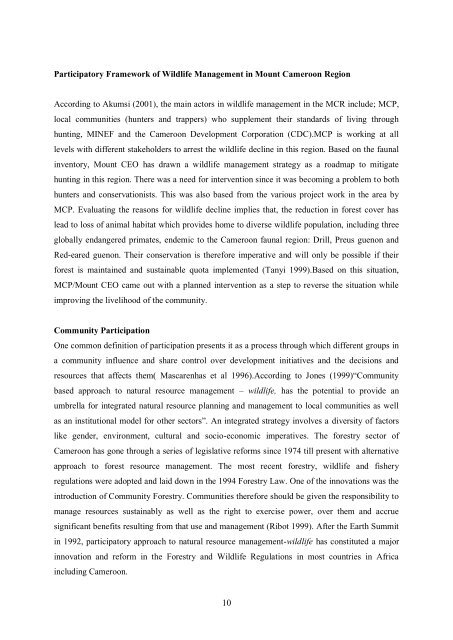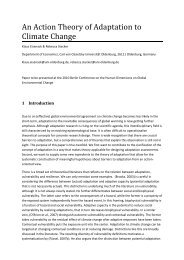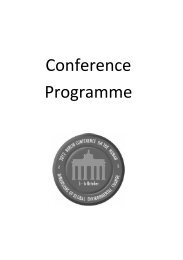PARTICIPATORY FOREST RESOURCE MANAGEMENT:
PARTICIPATORY FOREST RESOURCE MANAGEMENT:
PARTICIPATORY FOREST RESOURCE MANAGEMENT:
You also want an ePaper? Increase the reach of your titles
YUMPU automatically turns print PDFs into web optimized ePapers that Google loves.
Participatory Framework of Wildlife Management in Mount Cameroon Region<br />
According to Akumsi (2001), the main actors in wildlife management in the MCR include; MCP,<br />
local communities (hunters and trappers) who supplement their standards of living through<br />
hunting, MINEF and the Cameroon Development Corporation (CDC).MCP is working at all<br />
levels with different stakeholders to arrest the wildlife decline in this region. Based on the faunal<br />
inventory, Mount CEO has drawn a wildlife management strategy as a roadmap to mitigate<br />
hunting in this region. There was a need for intervention since it was becoming a problem to both<br />
hunters and conservationists. This was also based from the various project work in the area by<br />
MCP. Evaluating the reasons for wildlife decline implies that, the reduction in forest cover has<br />
lead to loss of animal habitat which provides home to diverse wildlife population, including three<br />
globally endangered primates, endemic to the Cameroon faunal region: Drill, Preus guenon and<br />
Red-eared guenon. Their conservation is therefore imperative and will only be possible if their<br />
forest is maintained and sustainable quota implemented (Tanyi 1999).Based on this situation,<br />
MCP/Mount CEO came out with a planned intervention as a step to reverse the situation while<br />
improving the livelihood of the community.<br />
Community Participation<br />
One common definition of participation presents it as a process through which different groups in<br />
a community influence and share control over development initiatives and the decisions and<br />
resources that affects them( Mascarenhas et al 1996).According to Jones (1999)“Community<br />
based approach to natural resource management – wildlife, has the potential to provide an<br />
umbrella for integrated natural resource planning and management to local communities as well<br />
as an institutional model for other sectors”. An integrated strategy involves a diversity of factors<br />
like gender, environment, cultural and socio-economic imperatives. The forestry sector of<br />
Cameroon has gone through a series of legislative reforms since 1974 till present with alternative<br />
approach to forest resource management. The most recent forestry, wildlife and fishery<br />
regulations were adopted and laid down in the 1994 Forestry Law. One of the innovations was the<br />
introduction of Community Forestry. Communities therefore should be given the responsibility to<br />
manage resources sustainably as well as the right to exercise power, over them and accrue<br />
significant benefits resulting from that use and management (Ribot 1999). After the Earth Summit<br />
in 1992, participatory approach to natural resource management-wildlife has constituted a major<br />
innovation and reform in the Forestry and Wildlife Regulations in most countries in Africa<br />
including Cameroon.<br />
10





